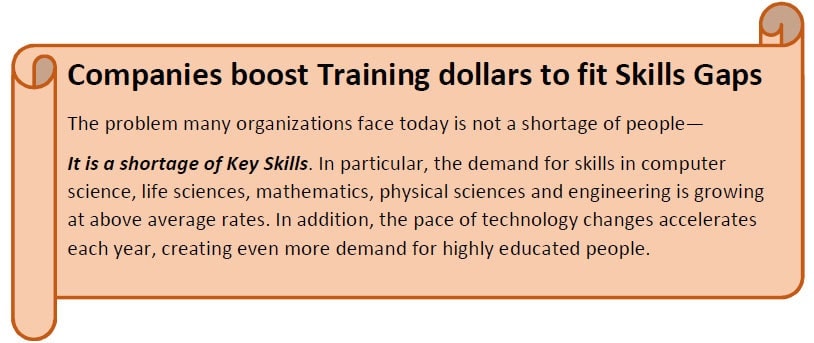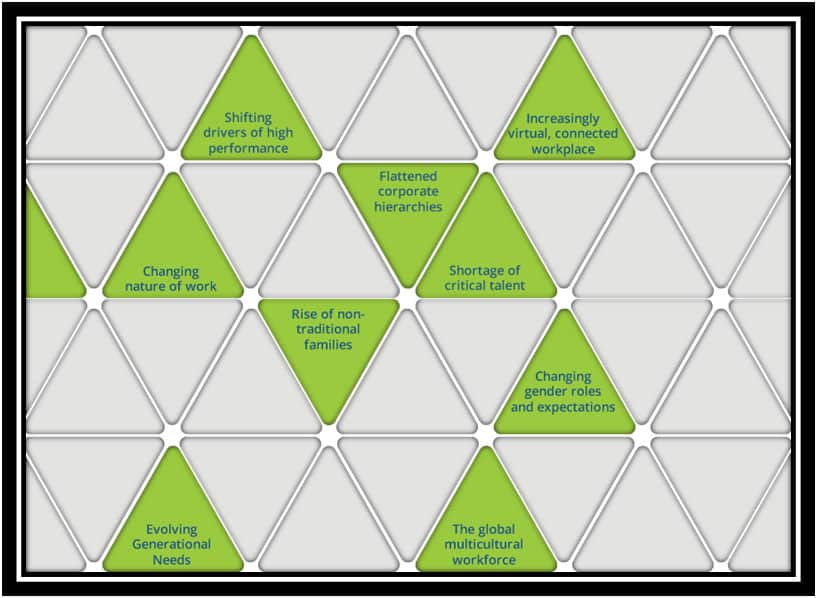Source: Adapted from Bersin by Deloitte Article
Benchmarks, Trends, and Analysis of the
U.S. Training Market


US spending on corporate training grew by 15% last year (the highest growth rate in seven years) to over $70 Billion in the US and over $130 Billion worldwide.
Businesses are responding by investing more in employee development, with training budgets increasing 15 percent, on average, in 2013. (See Figure 1.) In mature organizations, this investment is not just short-term training—it involves identifying capability gaps today and into the future, and building a “supply chain” of skills to fill these gaps for the long term.
This tremendous increase follows two years of accelerated spending in this area (10% in 2011 and 12% in 2012), illustrating how companies see tremendous skills gaps as we recover from the recession.
Corporate training is always a very good indicator of economic activity: when companies slow down they often cut training spending, and then as business grows they ramp back up to train new hires, sales people, and leaders. This is among the most discretionary of all corporate spending areas, so it is an excellent bellweather for business confidence.
Why the rapid growth? All our research tells us that organizations today suffer from a “skills supply chain” challenge. Not only do more than 70% of organizations cite “capability gaps” as one of their top five challenges, but many companies also tell us that it takes 3-5 years to take a seasoned professional and make them fully productive.
And the skills challenge is huge. Recent research shows, for example, that the Oil and Gas industry needs 60,000 petrochemical engineers by 2016 yet only 1300 graduate from US schools each year. This means that oil companies have to train, retrain, and jointly educate a lot of energy engineers to grow.
Technology Companies Invest More in Development
Organizations across the U.S. spent $1,169 per learner, on average, on learning and development (L&D) initiatives in 2013. This figure varies by company size and industry. Technology companies, for example, spent $1,847 per learner, on average—one of the highest of any industry sector. Tech firms (like Motorola Solutions, Adobe, IBM, and Xerox) have made large investments for training
their teams to evolve from product sellers to solution and industry experts. Other companies in the tech space (like EMC and Cisco) have transformed their engineering teams to focus on new products in consumer electronics, Big Data, telecommunications, and cyber-security.

Leadership Development Claims 35 Percent of Budget
The largest share of the L&D budget went to leadership development, with 35 cents of every training dollar, on average, spent on developing leaders at all levels—from first-line supervisors to executives. Leadership has always been important, but has become an even bigger issue as the economy recovers and many firms look to expand globally. Companies today are struggling to improve their leadership skills; more than 60 percent of all companies cite “leadership gaps” as their top business challenge.
BUILDING THE CASE FOR CHANGE: FAST FACTS
Today’s new workspace demands institutional change
To access interactive chart (Click Here)
Source: Deloitte









